#pliestocene
Text
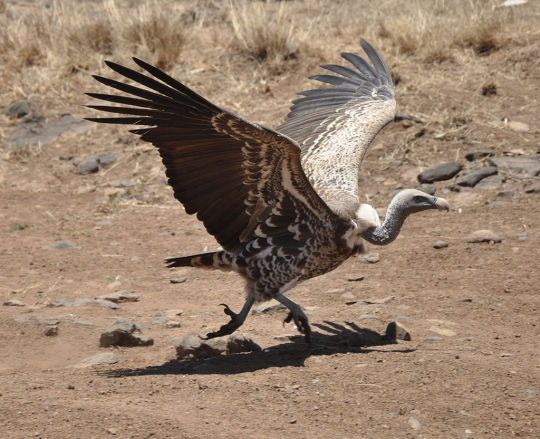
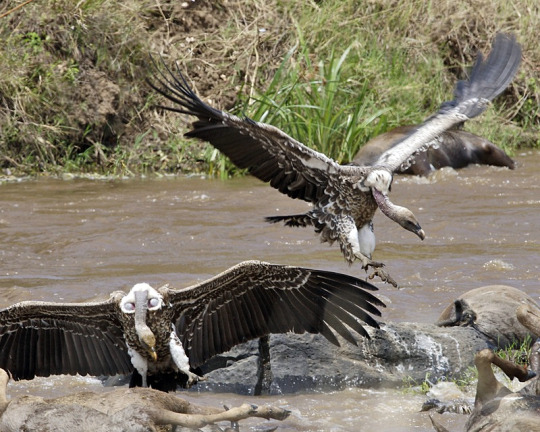
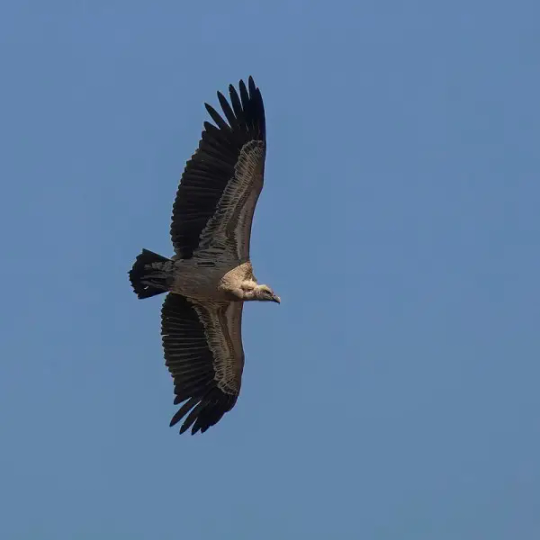
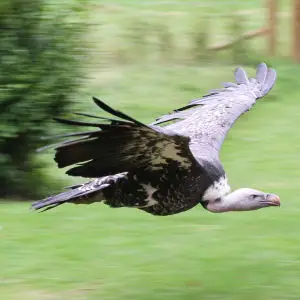

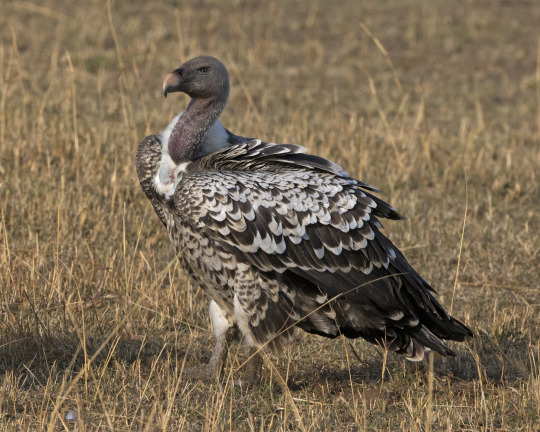
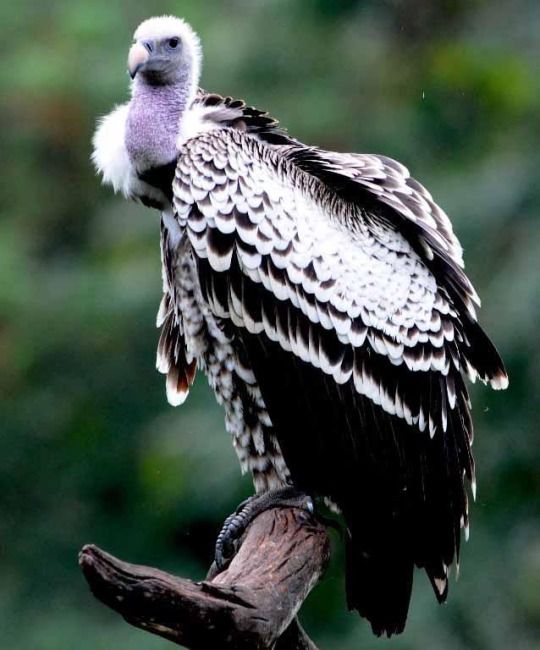
Rüppell's vulture also called Rüppell's griffon vulture, named after Eduard Rüppell, is a large bird of prey in the genus Gyps which is native throughout the sahel and eastern Africa including the countries of Algeria, Benin, Burkina Faso, Burundi, Cameroon, the Central African Republic, Chad, The Ivory Coast, Djibouti, Eritrea, Ethiopia, Gambia, Ghana, Guinea, Guinea-Bissau, Kenya, Mali, Mauritania, Niger, Nigeria, Rwanda, Senegal, Somalia, South Sudan, Sudan, Tanzania, Togo, and Uganda. Here they tend to inhabit grasslands, mountains, and open woodland. Rüppell's vultures are diurnal and very social birds, roosting, nesting, and feeding in large flocks. They spend much of their time flying at great altitudes, using strong winds and thermals to efficiently soar they are known to regular cruise at upwards of 20,000ft (6,000m) above the ground with some known to go as high as 37,000ft (11,300m) making them the highest flying bird. These vultures locate food by sight only, and often follow herds of animals. Once they find a carcass they swoop down, land a little way off, then bound forward with wings spread and their long neck outstretched. Even amongst old world vultures, Rüppell's vultures are specialized feeders with a spiked tongue and strong beak they can strip flesh with ease, and feed upon pelts, hides, and even the bones themselves. Reaching around 33 to 41in (85 -103cms) long, 14 – 20lbs in weight, with a 7.5-8.6ft (2.26 -2.6m) wingspan. They are one of the largest vultures in Africa, both sexes sport mottled brown or black feathering overall with a whitish-brown underbelly and thin, dirty-white fluff covering the head and neck. The base of the neck has a white collar, the eye is yellow or amber, the crop patch deep brown. The head does not have feathers. This species of vulture is considered to be monogamous, forming lifelong breeding pairs. They nest on cliffs in colonies up to a 1,000 strong. After courtship a pair will work together to build a nest using sticks, grass, and leaves that they have gathered or stolen from other nests, here the mother will lay 1 egg. Both parents share in incubation of their egg over a period of 55 days. Once the chick hatches, both parents will feed and tend to it for about 150 days when it fledges. Young remain dependent on their parents after fledging, not reaching independence until the next breeding season. Under ideal conditions a ruppells vulture may live up to 50 years.
#pleistocene#pleistocene pride#pliestocene pride#pliestocene#bird#dinosaur#vulture#ruppells vulture#africa#asia#europe#eurasia#flying#griffon#griffin#griffon vulture
436 notes
·
View notes
Text
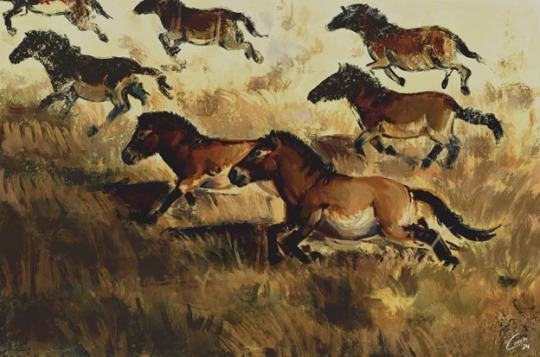
Ice Age Horses - by Caxela
#natural history#prehistoric life#paleoart#prehistoric animals#prehistoric#prehistoric horses#horses#horse#equine enrichment#ice age#pliestocene#paleontology#primitive horses#early horse#steppe#equine#equine friendz
77 notes
·
View notes
Text
Tangent from this... Researching extinct Pleistocene predators to get a sense of what nonhuman predatory animal threats proto-humans and early humans might have faced really gave me a new appreciation of how scary lions are. So many of these extinct Pleistocene predators are described in terms of being some fraction of the size of a lion.
Assuming I haven't missed some extinct scary Pliestocene predator, I think the scariest nonhuman animal threat to proto-humans and early humans on the African savanna probably wouldn't have been some extinct predator, it'd have been lions.
I think if you posted a description of lions to the internet of a world where they didn't exist, people there might take a look at it and think they were seeing somebody's spec bio exercise in imagining a really scary predator that's relatively solidly grounded in real-world animal precedent and has the vibe of a real animal instead of a movie monster. "What if there were very big cats kind of like tigers, but they hunted in packs kind of like wolves? That'd be pretty scary, huh?"
9 notes
·
View notes
Text
Today, I'm making a bit of a tribute to my home, Australia. This is an illustration of prehistoric Pliestocene Australia, a time when our marsupials were huge. I hope you enjoy.

12 notes
·
View notes
Text
hello
grug a caveman from pliestocene era
grug like rock, and also stick
grug got thawed from iceberg two day ago
grug now in today world
grug learning
0 notes
Photo
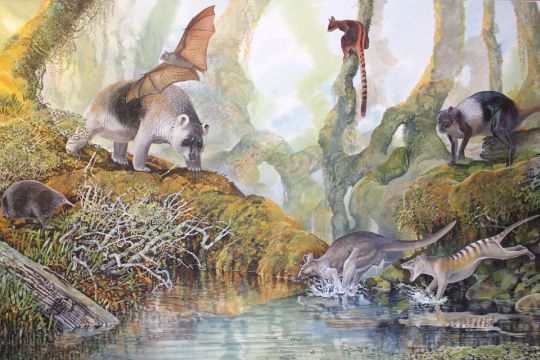
Ice Age Australia
#ice age#stone age#australia#bat#stonepunk#stone punk#wallaby#tasmania#tasmanian tiger#thylacine#echidna#wombat#diprotodon#tree kangaroo#kangaroo#pliestocene#pliestocene pride
62 notes
·
View notes
Photo
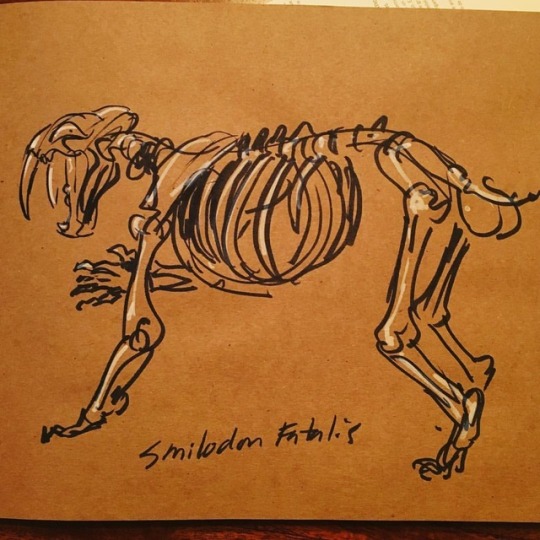
Quick sketch from @nhmla of smilidon fatalis. #inktober2017 #inktober #sabertooth #iceage #pliestocene
3 notes
·
View notes
Note
Hey, I wanna reblog that post about the ocean that you added the picture of the thing?? that looks like a 70s chandelier on but I'd like to caption it for accessbility reasons and I have no idea what it is, so any chance you could tell me the name? Thanks
Oh dear, this is very noble of you but yes, that is really a deep-sea sponge and it is absolutely for real called the Ping Pong Tree Sponge. It’s part of a larger genus called Chondrocladia that’s been around since at least the pliestocene, probably longer, and also includes things like the Harp Sponge:

Yes, this is an animal. Demosponges in general is a funky group but the deep-sea sponges are WILD. You can watch a nice video about her here: https://www.mbari.org/products/creature-feature/harp-sponge-landing-page/
593 notes
·
View notes
Text
the cool thing about wraith rp wise is that she can canonically bounce between dimensions which means you can do anything w her. you can drop her in an alternate pliestocene era where mastodons can drive cars, with eight other wraiths, and that’s canon baby!
1 note
·
View note
Photo

So much love for the toof kitties. Happy Caturday! . "Pliestocene King" by Christy "Goldenwolf" Grandjean | www.goldenwolfen.com Watercolor and colored pencil. 2007. . https://www.etsy.com/shop/goldenwolfart https://www.patreon.com/goldenwolf #caturday #sabertooth #sabertoothtiger #smilodon #prehistoric #bigcat #feline #goldenwolf #goldenwolfen #christygrandjean
#feline#goldenwolf#sabertooth#bigcat#christygrandjean#sabertoothtiger#prehistoric#caturday#smilodon#goldenwolfen
16 notes
·
View notes
Photo
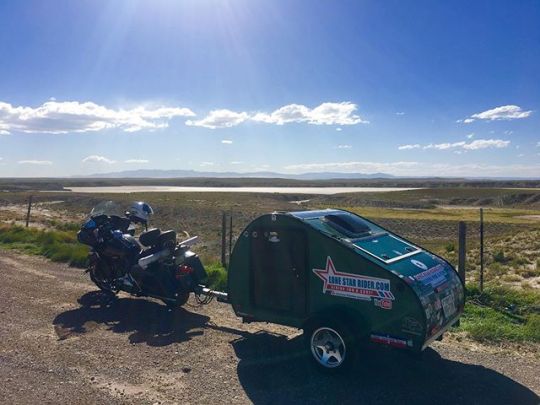
Laguna del Perro is the largest, occur in the lowest part of the Estancia basin, a closed depression between the Manzano Mountains to the west and the lower Pedernal hills to the east. The Basin was filled by a 100 foot-deep lake in the Pliestocene time and native peoples have always mined salt here. The community was founded in 1879. http://bit.ly/2GEpUYS #AmericanDiabetesAssociation #RidingForACure #TeardropTrailer #TrailerTime #iphone6splus #rexcovingtonphotography #lonestarrider #LagunadelPerro — view on Instagram http://bit.ly/2wq52wk
0 notes
Text
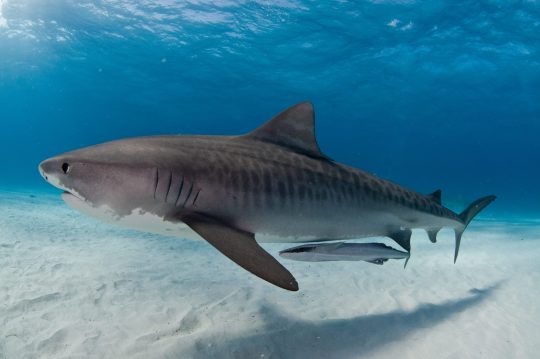
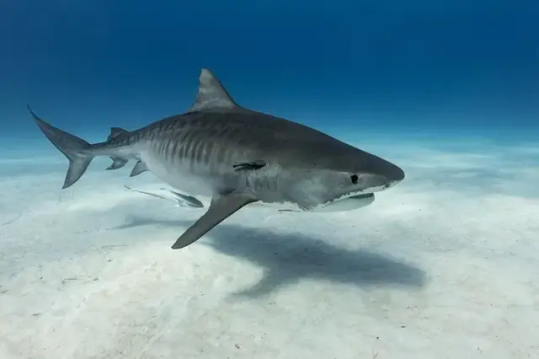

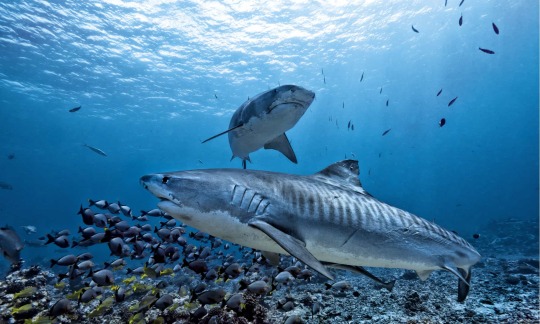
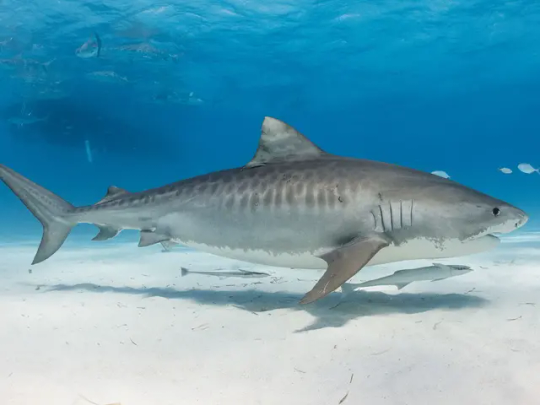
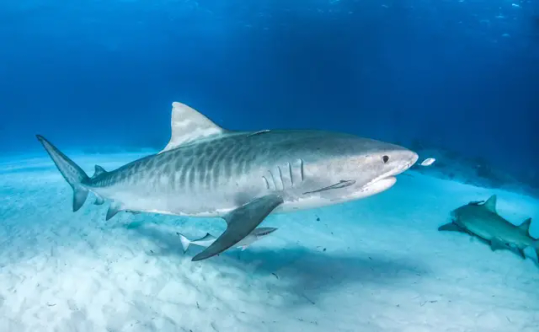
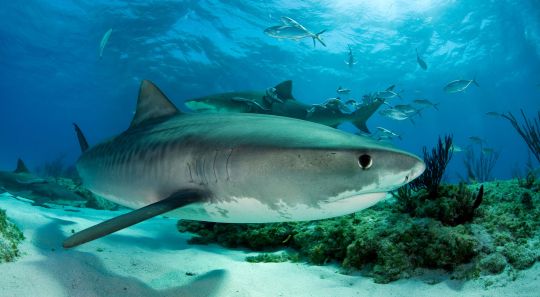
The tiger shark is a species of ground shark, and the only extant member of the genus Galeocerdo and family Galeocerdonidae. It is a highly nomadic species which inhabits tropical and subtropical waters world wide up to 3,000ft (900m) in depth, and is often found in coastal waters with particular abundance in the gulf of mexico, Caribbean sea, Indian ocean, and western pacific. Tiger sharks are often call the garbage cans of the sea and have reputation for eating almost anything. As such there diet is wide and heavily varied an is known to regularly include: small fish, jellyfish, crustaceans, cephalopods and other mollusks, rays, skates, sawfish, sea birds, sea snakes, sea turtles, other sharks, dolphins, seals, sea lions, dugongs, manatees, crocodilians, porpoises, and sick or injured whales. When near islands or coastlines they have been known to eat sheep, goats, dogs, pigs, rats, horses, deer, cattle, cats, camels, monkeys, inland birds, bats, lizards and inedible objects, such as license plates, cans, tires, books, boat oars, soccerballs and baseball bats. Tiger sharks are themselves occasionally preyed upon by orcas, great whites, and saltwater crocodiles. The tiger shark commonly reaches 10.5-14ft (3.2 -4.26m) in length and 385- 1400lbs (175 – 635kg) in weight, with the largest recorded reaching 18ft (5.5m) long and 3360lbs (1525kg). This ranks the tiger shark amongst the largest extant sharks on earth only being surpassed by the whale, basking, great white, pacific sleeper, Greenland, and blunt nosed sixgill sharks. They have a broad snout and stocky body with proportionally large fins and a long upper tail. Tiger shark teeth are unique with very sharp, pronounced serrations and an unmistakable sideways-pointing tip. Such dentition has developed to slice through flesh, bone, and other tough substances such as turtle shells. In the northern hemisphere the mating season takes place from march to may and the southern hemisphere from November to January, with males breeding every year while females breed once every 3 years. After a year long pregnancy mother tiger sharks give birth to 10 to 80 pups. Under ideal conditions a tiger shark may live upwards of 12 years.
#pleistocene#pleistocene pride#pliestocene pride#pliestocene#fish#shark#shark week#tiger#tiger shark
210 notes
·
View notes
Text
youtube
La Brea Tar Pits Unveil an Ice Age Mystery | NORTH 02
#prehistoric life#palaeontology#natural history#prehistoric animals#paleontology#prehistoric#la brea#rancho la brea#la brea tar pits#megafauna#pliestocene#Youtube
0 notes
Text
Following a tangent from here, where I wrote:
"The predators alive now mostly do not attack humans because they follow mother’s wisdom. The conservatism inherent in the mother’s wisdom strategy may keep humans safe for a while, but big predators in most of the world have had tens of thousands to millions of years to eat a human (or proto-human), discover we are quite edible, and add us to the mother’s wisdom food list that they transmit to their offspring. Why hasn’t this happened? Well, what happens to a predator that kills and eats a human? Other humans follow the people-eater back to its den and kill it! The only predators that survived were the ones that did not habitually eat humans, either as a matter of blind luck or because they were smart enough to learn that we’re more dangerous than we look. I suspect the saber-tooth cat, the marsupial lion, etc. are not around anymore because they were unable to make this adjustment."
Things we might expect to see if this model is accurate, that we could look for to test its plausibility:
Many large predator species might show evidence of genetic bottlenecks within the last few tens of thousands to few million years.
These genetic bottlenecks might show a geographical pattern. In the New World and Australia, they should happen soon after the time of first contact with humans. So, in the Americas, they should happen between around 20-10 KYA. In Australia, they should happen around maybe 60-40 KYA, though I think in Australia this might be very hard to test, as I think the only native Australian predator powerful enough to be a plausible habitual people-eater that survived into historic times is the Tasmanian tiger, and I don't think there's much Tasmanian tiger soft tissue left, so it might be impossible to study the DNA of more than a few individuals.
In the Old World, they should happen earlier, and there the timing is more interesting in a way. The Old World predators co-evolved with humans. In the Old World, the genetic bottlenecks would likely mark, not the time of contact with humans, but the time that humans became intelligent enough to make spears, imagine delayed revenge, and imagine pre-emptively killing a predator now so it will not attack their band in the future. If we see a lot of big Old World predators having genetic bottlenecks, say, a million years ago, that might be a ghostly but profound window into the development of the human mind!
If so, the timing of Old World predator genetic bottlenecks might give us clues about what Neanderthals, Denisovans, etc. were like and why Homo sapiens ended up replacing them. If Eurasian predator genetic bottlenecks cluster before a hundred thousand years ago or so, this suggests that Neanderthals, Denisovans, etc. were also capable of delayed revenge and/or pre-emptive self-defense with a far planning horizon. On the other hand, if predator genetic bottlenecks neatly follow the Homo sapiens out of Africa migration, that suggests delayed revenge and pre-emptive self-defense with a far planning horizon were behaviors unique to Homo sapiens.
We might also expect that dumber predator species would tend to show tighter genetic bottlenecks, and the dumbest predator species would have tended to be the ones that couldn't make the adjustment to avoiding humans and went extinct. Smart predators could learn that it was a bad idea to eat humans, but a dumb predator species could only "learn" that by natural selection, operating either on genes or on different transmission lines of "mother's wisdom." Intelligence doesn't fossilize, but we might be able to loosely track it in the fossil record by looking at brain size and brain to body size ratio.
So we might expect the predator species that died out in the late Pliestocene extinction such as saber-tooth cats, marsupial lions, cave lions, etc. would tend to show smaller brains or brain to body size ratios than today's surviving predators. Smilodon might show a smaller brain to body size ratio than jaguars and mountain lions. Thylacoleo might show a smaller brain to body size ratio than the Tasmanian tiger. The cave lion might show a smaller brain to body size ratio than the African lion. And so on.
We might also expect, as per that mother's wisdom essay, that predators that lived in environments with few poisonous animals would have been more likely to go extinct and more likely to show noticeable and tight genetic bottlenecks if they survived, as they would have been less cautious about what they ate and hence more likely to eat humans.
It seems to be the mostly the biggest predators that died in the late Pleistocene extinction. Perhaps smaller predators had an easier time adjusting to avoid humans because they were less confident. It's pretty easy to imagine that the 50-70 kg cougar grasped relatively easily that humans were better avoided, but the more powerful 160-280 kg Smilodon fatalis thought it was ridiculous to be afraid of some weak funny monkey.
Whether a predator species survived and how tight a genetic bottleneck it went through might also correlate with how tasty human flesh is to them. Maybe the North American wolf survived but the dire wolf didn't because the dire wolf thought we were delicious but North American wolves think we taste like crap. This could potentially be investigated by some mildly ghoulish but basically harmless experiments involving feeding various predators bits of human flesh taken from the corpses of people who died of natural causes and agreed to donate their corpses to the experiment (just be careful how you handle the predators you use in this experiment afterward; you've potentially given them a taste for human flesh and added it to their mother's wisdom food list). Cheetahs seem to have a particularly tight recent genetic bottleneck; it would be interesting if they show a particular relish for human meat in such an experiment. Per the inference that smart predators could learn to avoid humans but stupid ones could only "learn" by natural selection, stupider living predators might be more likely to dislike the smell and taste of human; a smart predator could learn to avoid predating on us even if we were delicious to it, but in a stupid predator species the only survivors might be the ones that carry some gene that makes them simply dislike the smell and taste of human.
I might check it anybody's investigated anything like this in a spare hour at some point. A lack of such an apparent pattern of evidence doesn't necessarily mean I'm wrong, there are a lot of potential confounders, but such a lack would decrease my confidence in my model, and, by the same token, a noticeable pattern of evidence in line with these predictions would increase my confidence in it.
4 notes
·
View notes
Video
youtube
agatized fossil bone with HAIR Dec 12 2019
0 notes
Photo

A couple panels from my contribution to an anthology that "hopefully" comes out someday. #mammoth #pliestocene #iceage #labreatarpits
1 note
·
View note